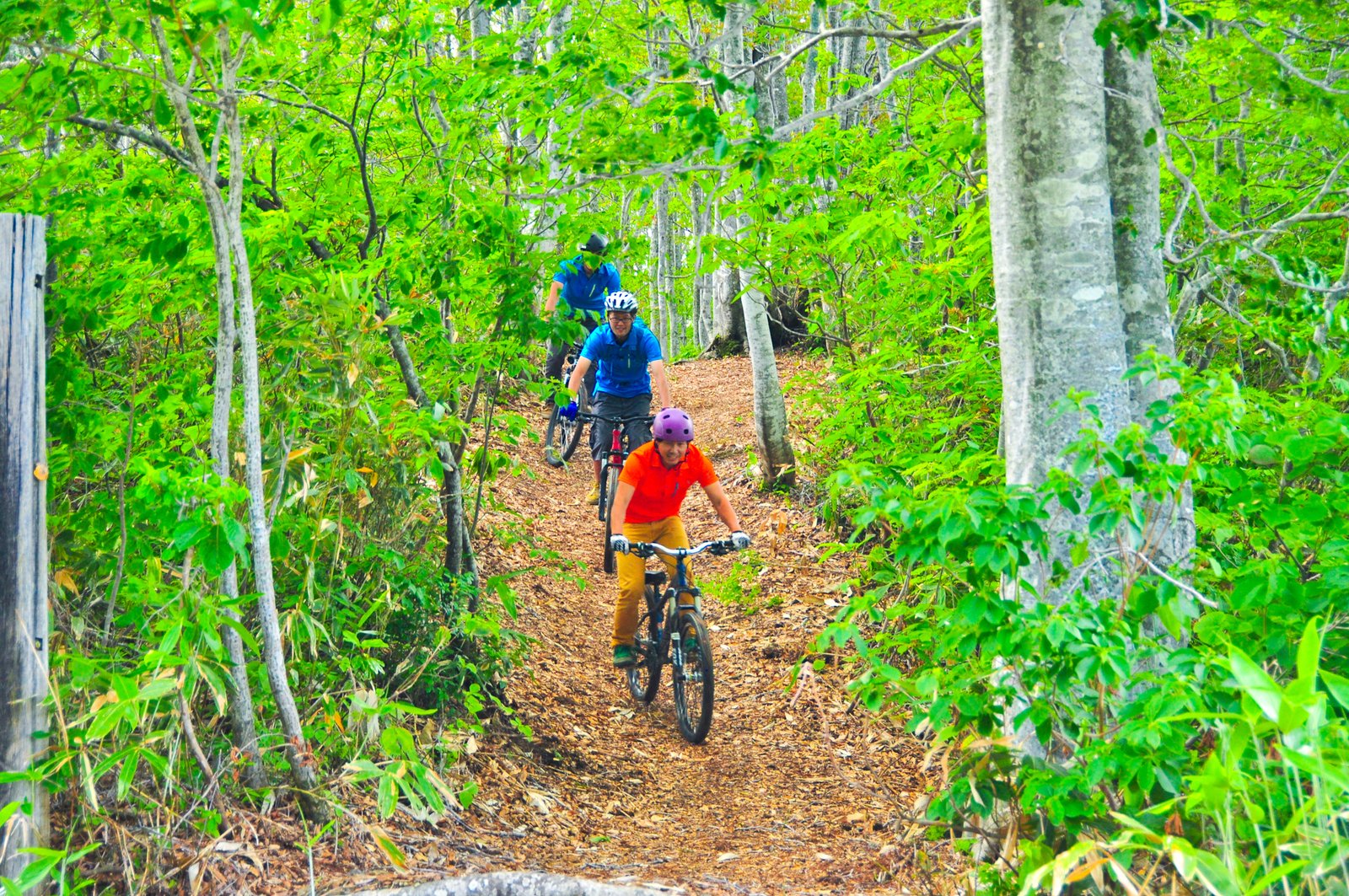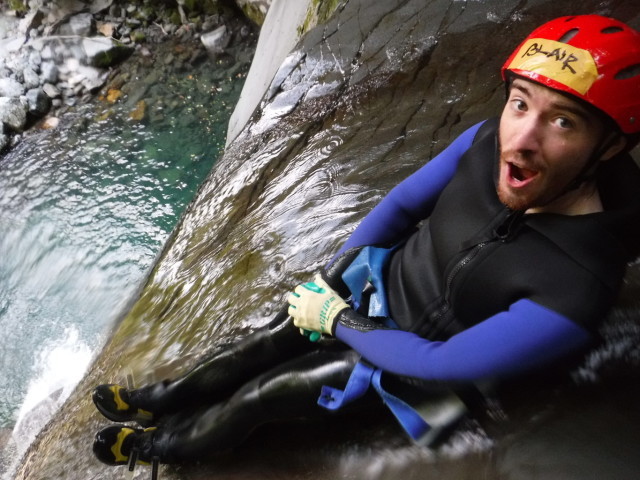The Hakuba Valley [Guide]
An outdoor playground at the base of the Northern Japanese Alps. From hiking and mountain biking to skiing and snowshoeing, there’s something to enjoy any time of year!
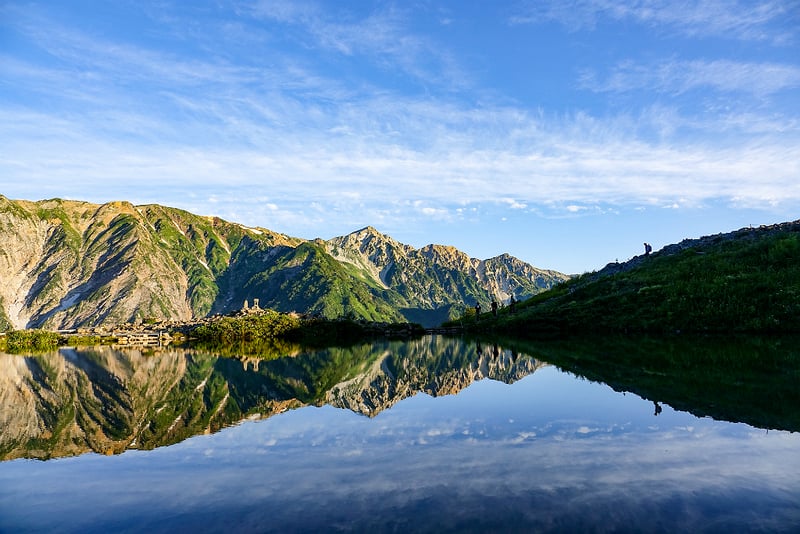
From north to south, the Hakuba Valley connects the three communities of Otari, Hakuba, and Omachi. Otari and Hakuba are famous for their divine powder snow, a.k.a. “Japow,” and Omachi is famous for its access to the Tateyama Kurobe Alpine Route’s massive snow walls that reach heights of up to 20 meters. Home to the 3,000-meter-high Northern Japanese Alps, it’s no wonder that the Hakuba Valley is a popular destination for outdoor enthusiasts.
The Hakuba Valley Travel Guide
Location and Access
The Hakuba Valley sits in the northwestern corner of Nagano Prefecture at the base of the Northern Japanese Alps. It is just 70 minutes from Nagano Station to central Hakuba by bus, and from Matsumoto Station, it takes 60 minutes by express train or 100-120 minutes by local train via the JR Oito line. Direct buses are also available from major cities.
Access to Hakuba in Winter
During the winter season, there are additional buses from Tokyo and major airports to the Hakuba Valley. For information on buses direct from Narita or Haneda airports, see the Nagano Snow Shuttle website.
From Tokyo to Hakuba
By train/bus: Take the Hokuriku Shinkansen bullet train from Tokyo Station to Nagano Station (90 min.), then change to the Hakuba line express bus and get off at Happo Bus Terminal or your resort of choice (70 min.). Or, take the express bus from Shinjuku to Hakuba Happo Bus Terminal (5 hrs. 15 min.).
By car: Hakuba is about 4 hours away from Tokyo. If traveling via the Joshin-etsu Expressway, get off at the Nagano IC exit and drive to Hakuba(60 min.). If traveling via the Nagano Expressway, get off at the Azumino IC exit (70 min.).
From Nagano City to Hakuba
From Nagano City, take the express bus from Nagano Station and get off at Happo Bus Terminal or your resort of choice (70 min.).
From Matsumoto City to Hakuba
From Matsumoto City, take the Limited Express Azusa (60 min.) or local train (100-120 min.) to Hakuba.
See here for access to Nagano and Matsumoto from major cities around Japan.
When to Visit
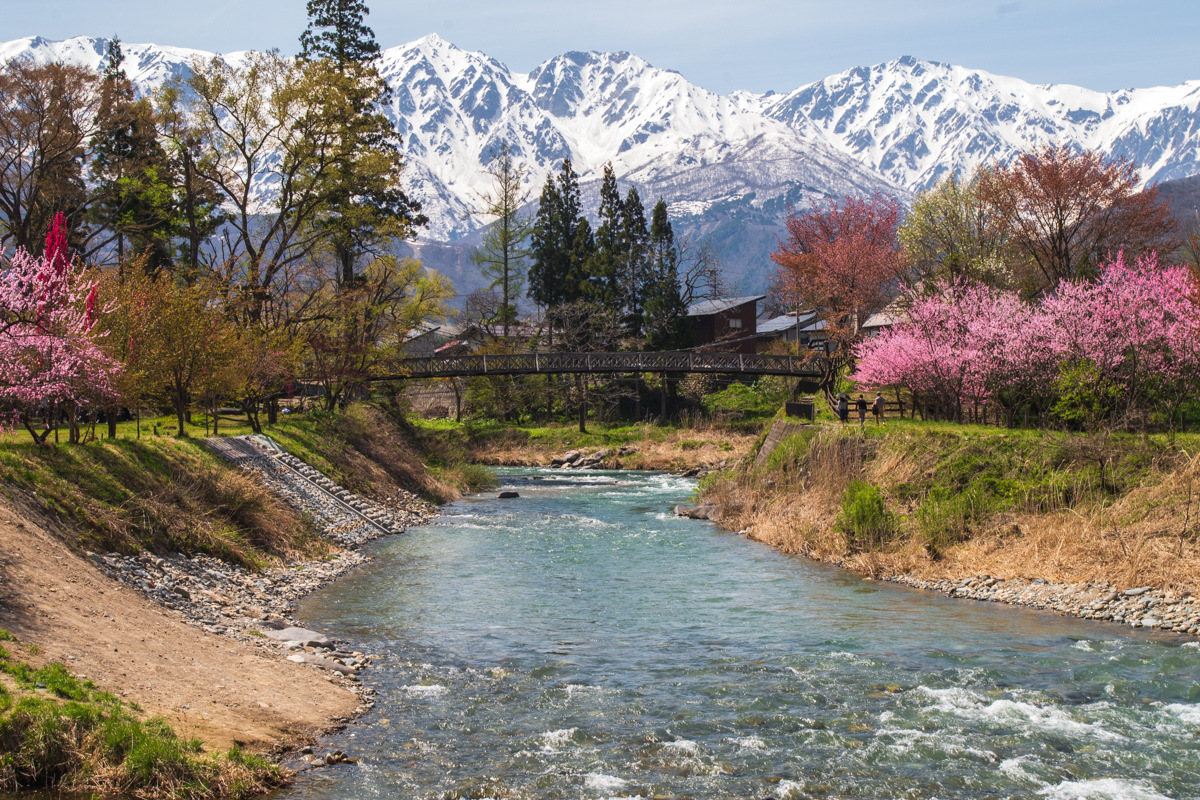
Hakuba offers majestic scenery in every season. In spring, you can enjoy the snow-capped Japanese Alps and cherry blossoms in bloom from late April to early May. In summer from June to the end of September, you can enjoy a variety of outdoor activities such as hiking, mountain biking and cycling. Between mid-September and late October, vivid fall foliage makes its way down the mountain tops to the valley below. And in winter from mid-December to late March, you can ski, snowboard or play in the plentiful snow.
Peak vs. Off Peak Season
Peak season in Hakuba includes major holiday periods such as Golden Week (1st week of May) and Obon, as well as January through February in winter and mid-June to September in summer.
For a quieter visit, consider the period after Golden Week (mid-May to early June), late autumn (November) or spring skiing season (March). Visiting on weekdays helps too.
Things to Do
Ride Ropeways to Amazing Natural Scenery

Hakuba Mountain Harbor at Iwatake Mountain Resort
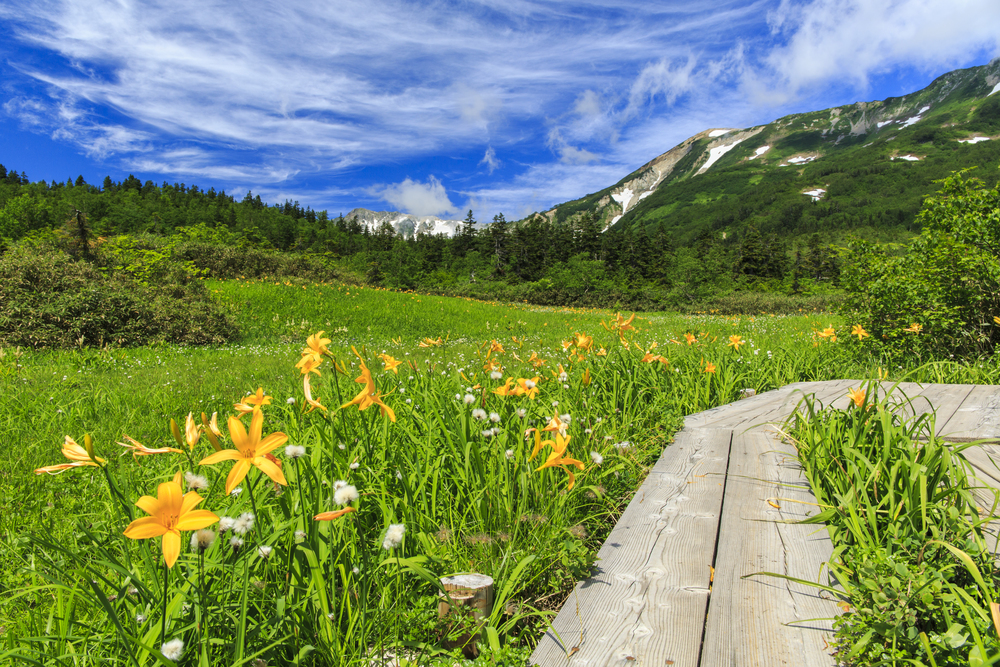
Tsugaike Nature Park in summer
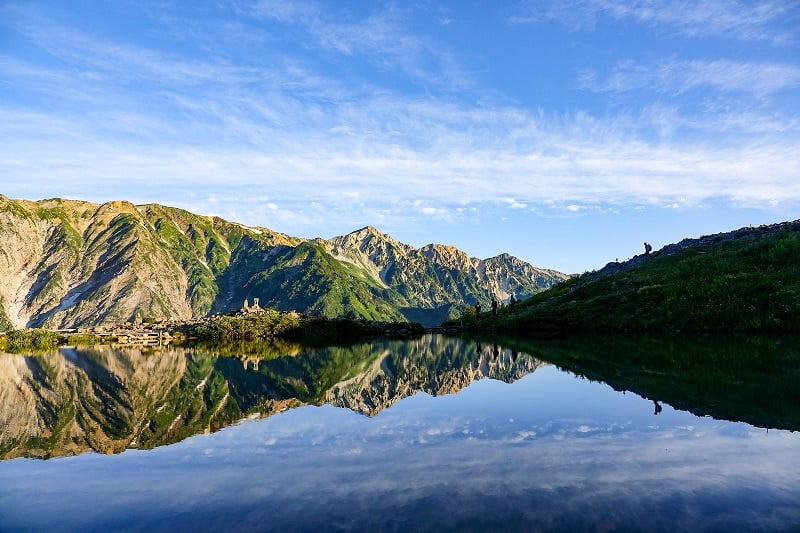
Happo Pond at Hakuba Happo One

Hakuba Mountain Beach at Hakuba Happo One
There are magnificent views of the mountains to be had all around the valley. With the help of ski resort lifts and gondolas, you can easily reach some of the most scenic points in Hakuba.
Atop Iwatake Mountain Resort is Hakuba Mountain Harbor, a scenic terrace with views of Hakuba’s Sanzan mountains. The terrace is just a short walk from the gondola station, making it a breeze to visit.
For light hiking with views of Japanese Alps, you can take the Tsugaike Ropeway up to Tsugaike Nature Park. At 1,900-meter heights, you can trek among these precious highland marshes with colorful alpine flowers, verdant foliage and majestic views of the Hakuba Sanzan mountains.
Finally, Happo One Ski Resort has several places to stop and take in the views. At the midpoint of the resort is the Usagidaira Terrace and Hakuba Mountain Beach. Here you can grab some food and drink and leisurely enjoy the scenery of this mountain resort area. If you take the Happo Alpen line to its endpoint and hike another 90 minutes, you are greeted with one of Hakuba’s most iconic viewpoints: Happo Pond. If you arrive early on a clear day, you can see reflections of the Japanese Alps in the water’s surface—simply stunning! Learn more here.
Go Hiking, Mountain Climbing or Mountain Biking


The last section of the trail to Mt. Karamatsu

Hakuba Oike Pond

Mt. Hakuba (aka Mt. Shirouma) and Hakuba Sanso Lodge
During the green season, you can trek around precious wetlands, hike up to stunning alpine ponds, climb the peaks of the Japanese Alps, cycle around the valley or zoom down steep mountain biking courses.
For hiking, Happo Pond mentioned above offers incredible scenery while being very accessible, and if you’d like to make a full day out of it, you can continue on the trail all the way to Mt. Karamatsu (2,600m). Longer mountain climbs include the course from Tsugaike Nature Park to Hakuba Oike Pond and the course to Mt. Hakuba (aka Mt. Shirouma) via the snowy Daisekkei valley.
Iwatake Mountain Resort’s MTB Park has four downhill courses as well as cross country and practice courses at the base of the mountain. Evergreen Outdoor Center also offers mountain biking and cycling tours around the valley.
Cool off while Kayaking, Stand-up Paddle Boarding or Canyoning
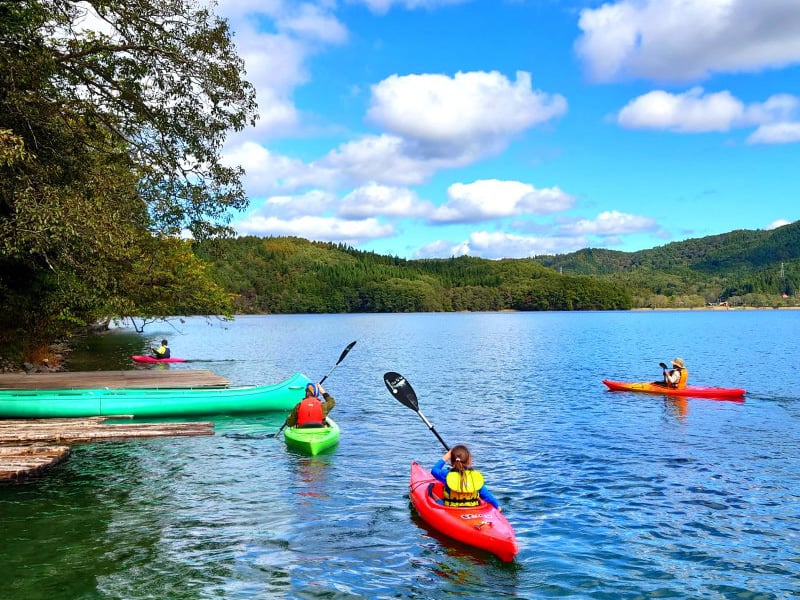
Canoeing on Lake Aoki
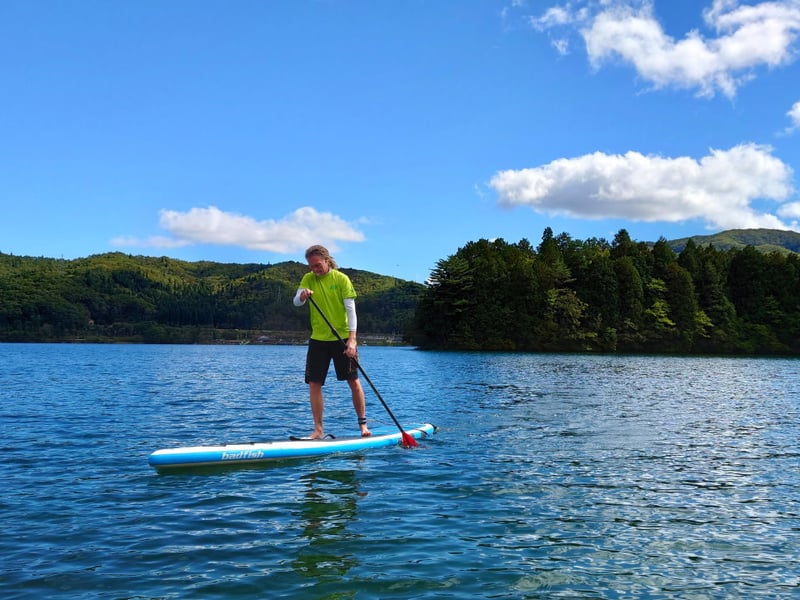
Stand-up paddleboarding on Lake Aoki

Dropping down a natural chute while canyoning in Hakuba
Spending some time on the water is a great way to cool off during the hotter months of the year. While Nagano is landlocked, it has its fair share of lakes and ravines where you can beat the heat. In the southern part of the Hakuba Valley is Lake Aoki, a popular place for kayaking, stand-up paddleboarding and canoeing. And around the mountains, there are ravines with waterfalls, natural chutes and large plunge pools—perfect for a day of canyoning!
Evergreen Outdoor Center and Hakuba Lion Adventure both offer a range of water sports activities, and the former also runs canyoning tours.
Walk the Shionomichi Trail
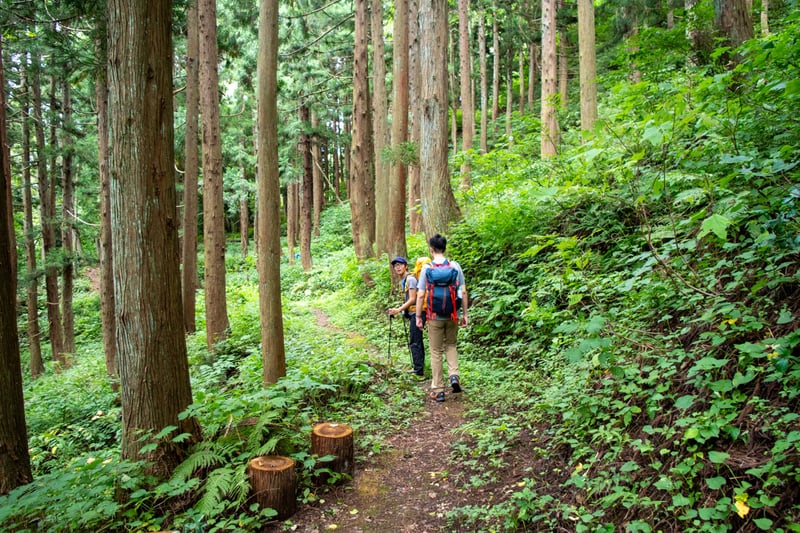
The Shionomichi Trail
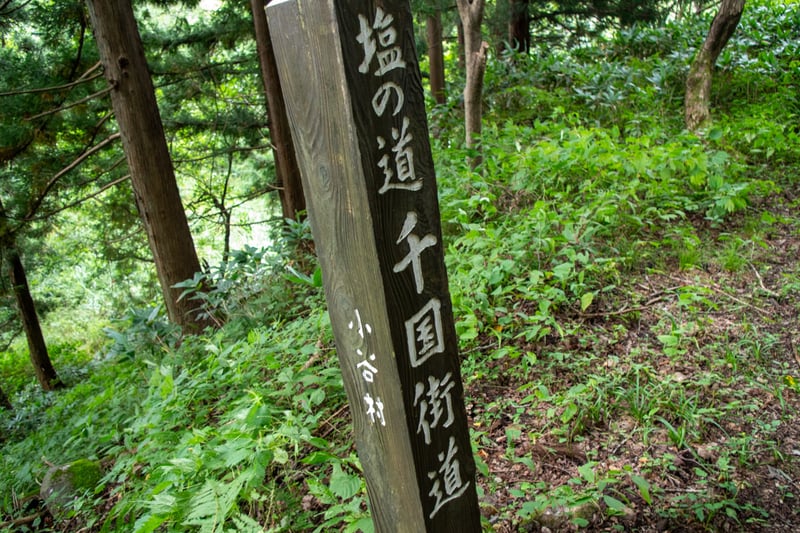
Posts marking the trail throughout Otari Village
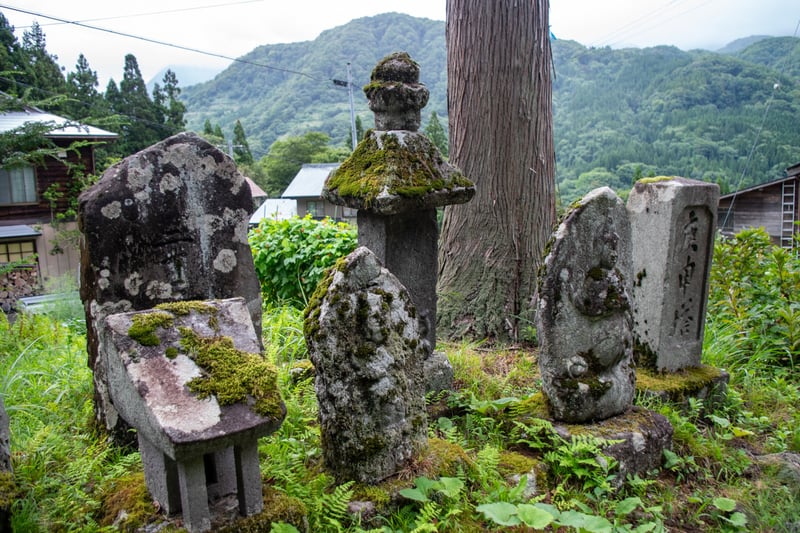
Many small stone shrines and dosojin statues can be found along the trail
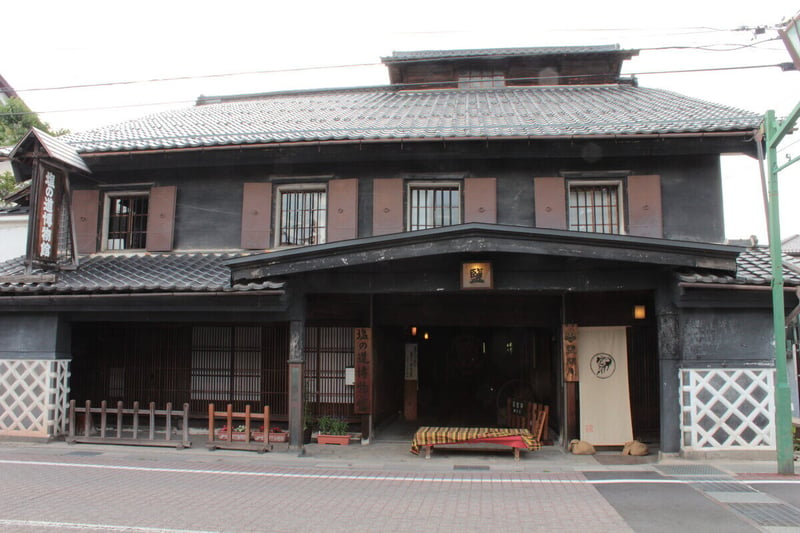
The Shionomichi Chojiya building in Omachi
The Shionomichi Trail, also known as the Chikuni Kaido, was used for transporting sea salt from Itoigawa in Niigata to Matsumoto in Nagano. The full route covers 120 kilometers between these two cities, meandering through countryside hamlets and fields of rice paddies at the base of majestic mountains.
The trail is divided into 11 sections, each beginning and ending at a train station along the JR Oito train line so you can easily hop on and off for as many days as you'd like. See here for details and itineraries along the Shionomichi Trail.
Go Skiing, Snowboarding or Snowshoeing in Winter

Hakuba Happo One Ski Resort

Hakuba Cortina

Hakuba 47
During winter, the valley boasts ten diverse snow resorts, all accessible on one common lift pass. The resorts offer everything from wide beginner trails to epic tree runs and waist-deep powder.
If you’re not a skier or snowboarder but still want to enjoy the snow, you can strap on a pair of snowshoes and walk through tranquil winter forests, or take a snowmobiling lesson for a more thrilling day outdoors.
Nearby Sightseeing
The Tateyama Kurobe Alpine Route
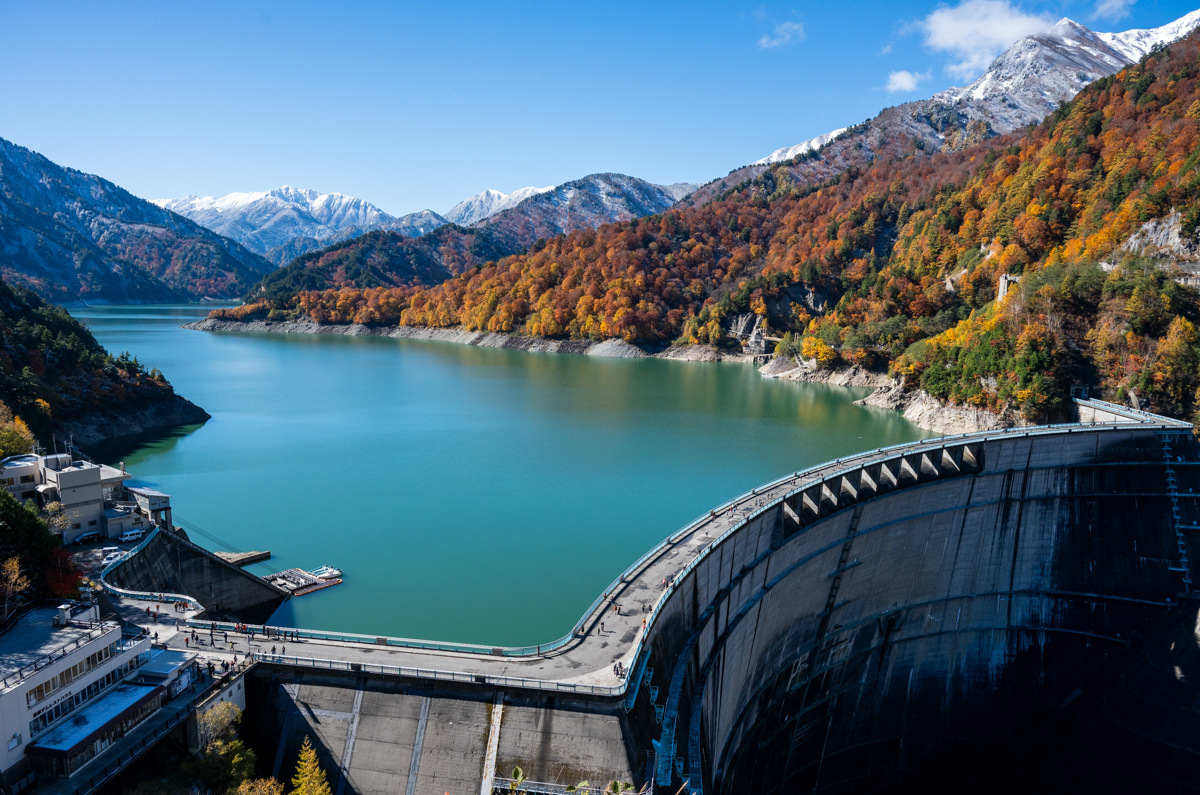
The Tateyama Kurobe Alpine Route is a spectacular scenic passage over the Japanese Alps connecting Nagano Prefecture’s Omachi with Toyama Prefecture and the Sea of Japan. This is an area of immense snowfall, and when the road opens in mid May, it is surrounded on both sides by walls of snow 10 meters tall. Special hybrid busses carry amazed passengers from the Toyama side to Murodo, which is the starting point to climb the peak of Mount Tateyama, one of Japan’s Three Sacred Mountains. From Murodo, the route conveys people on an exciting variety of transportation including cable car and ropeway to massive Kurobe Dam then through a 6.1 km tunnel (an amazing engineering feat) to the Omachi side.
Where to Stay
Hakuba Village Area
In addition to large hotels, Hakuba has over 200 small ryokans, lodges, and guesthouses near the slopes, and many of them are managed by native English speakers. These accommodations are mainly located in the Echoland, Happo, and Wadano areas. Echoland is about 10 minutes by car or shuttle bus from central Hakuba, and the closest resorts are Hakuba47 and Hakuba Happo-One. Restaurants, bars, and a vibrant nightlife are the main attractions of this area. The Happo area includes the Hakuba Happo Bus Terminal, making it the transportation hub of the village. Wadano, meanwhile, is a forested area between the Kokusai and Sakka slopes of Hakuba Happo-One resort, and is popular for its relaxed and easy-going atmosphere.
Otari Area (Hakuba Cortina, Hakuba Norikura, Tsugaike)
To the north in Otari you'll find large ski-in and ski-out hotels at the base of Hakuba Cortina and Hakuba Norikura resorts, and smaller family-run accommodations surrounding Tsugaike Mountain Resort.
Omachi Area (Omachi Onsen, Tateyama Kurobe Alpine Route)
To the south in the Omachi Hot Springs Area, a cozy town near the entrance of the Tateyama Kurobe Alpine Route, you’ll find more than a dozen hotels and ryokans to choose from.

